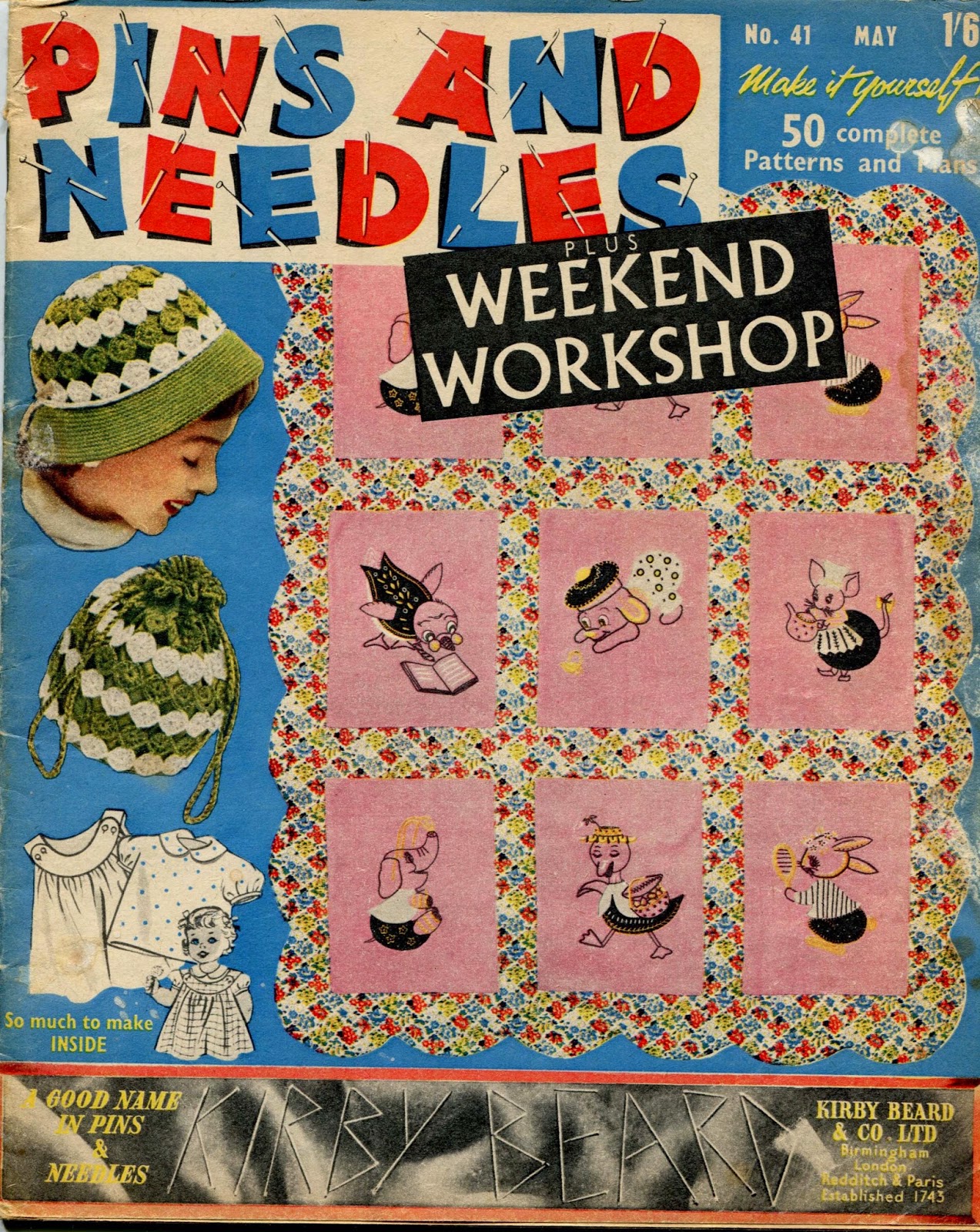In September 1949 a new craft magazine hit the newsagents and it's name was PINS AND NEEDLES. With their bold and bright, almost cartoon like, covers, it must have been refreshing to see in the post war era.
There had been craft magazines before, most famously Stitchcraft, but nothing that had covered the range of crafts that Christine Veasey imagined for hers. I have 49 copies of this wonderful magazine ranging from the first edition until to No. 167 for December 1966. Published quarterly until November 1952 it then went bi-monthly. By March 1955 it had become successful enough to go to being a monthly publication which it continued to be into the 1980s (but under a different editor and company).
Initially it was mainly knitting and crochet with a bit of needlework or embroidery. There was the occasional wood working project, usually furniture but sometimes toys or garden items. As time passed, the subjects spread to include dress making, tatting, hair pin lace, and cooking. There was always a good coverage new sewing patterns that you could buy directly from the magazine offices. Christine Veasay went to America on regular trips and brought back ideas that were new and fresh and translated them to the British sense of taste.
In March 1955 a section called Home Making was introduced. Britain suffered a severe housing shortage during and after the Second World War but by 1951 houses were springing up all over the UK. Although a great many were council owned, tenants could decorate them as they chose and Pins and Needles was there to help. They offered decorating advice, what the latest colour schemes were, how to renovate old furniture, how to build new furniture: everything to make your house modern. Within a few months, the Home Making section had been re-branded into Weekend Workshop which was aimed more at men with 'Bertie Buggetwise' as their guide to making everything from glass topped coffee tables to built in wardrobes, and advice on how to plumb in sinks and put up tv aerials.
Unlike Stitchcraft which was marketed by Patons and Baldwins to sell their yarns, Pins and Needles had to rely on other sources of income namely advertisers. Initially it was mainly yarn and handicraft suppliers with the odd advert for a knitting or sewing machine but as the years progressed more and more general catalogues, along with calls for people to become agents for them, became common. Whereas the early advertisers stressed their value for money and quality product, the latter ones start offering credit as a means of payment and offering the latest this and the newest that, possibly paving the way to the economic crash of 1973.
Aside from it being a crafting magazine, it also documented the changes
that the British people were undergoing and reflected not just fashion
trends but social and economic ones too. The Britain of the late 1940s
was one of hardship, rationing and a country coming to terms with the
cost, both financially and socially, of a global war. By 1957, full
employment, a rise in consumerism, wages, and export led Harold
MacMillan to make his 'never had it so good' speech and Britain was
booming.
 It's the May Bank Holiday weekend here in the UK and it's freezing so to celebrate / commiserate, I thought that I'd offer this great pattern for a penguin to remind us that there are places that have it worse.
It's the May Bank Holiday weekend here in the UK and it's freezing so to celebrate / commiserate, I thought that I'd offer this great pattern for a penguin to remind us that there are places that have it worse.





















































